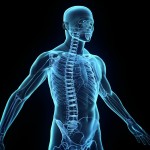The human body is truly remarkable. Within a few days following my hernia surgery last week, I started to have discomfort/pain on the underside of my shoulder, which is starting now to dissipate. When we have trauma to one part of our body, pain is often referred to another part, perhaps as a safety mechanism to draw our attention away from the trauma site so our body can focus on healing. Even with my PhD, I am still often astounded by how our bodies are designed to function, and how evolution and/or divine intervention could have accounted for such traits. Although divine intervention can perhaps see into the future, evolution has no foresight.

This issue of my hernia surgery, foresight, and human design takes me back to an interesting concept I studied when working on my PhD—symmorphosis. The theory of symmorphosis, first proposed by Ewald Weibel, proposes that an organism’s structural design is regulated by its functional demand. As Weibel wrote, “…that the quantity of structure incorporated into an animal’s functional system is matched to what is needed: enough but not too much.” The theory of symmorphosis, then, seems to be consistent with the major tenet of evolution—natural selection—because natural selection will only sustain traits that are needed for success. Any “extra baggage” will not be supported and become extinct. For example, under the theory of symmorphosis, one would expect the cardiovascular system to be designed to supply just enough oxygen to the tissues for them to function—”enough but not too much.” However, even during maximal exercise, some of the oxygen traveling to the tissues in the arterial circulation returns to the heart in the venous circulation, and is thus not used by the exercising muscles. It appears, therefore, that the design of the human body, at least in some cases, has added a little in reserve, as if to provide a “safety net” to prevent the system from failing if and when it is overloaded. In this light, the theory of symmorphosis does not seem to be consistent with natural selection, since traits or behaviors do not evolve for future utility; natural selection has no foresight.
Since symmorphosis implies that it is demand driving the change in structure, the limits of human performance can only be exceeded if the demand becomes greater. Given that modern human’s lifestyle is more sedentary than that from which he evolved, it may be expected, if the theory of symmorphosis is correct, that the limits of human performance will decrease with further evolution.
Or my shoulder pain could just be from the carbon dioxide gas the surgeon used to inflate my abdomen during the surgery so he could see what he was doing. But that’s not nearly as romantic or sexy, so I’m going with my referred pain theory.

One Response to Hernias, Foresight, and Symmorphosis